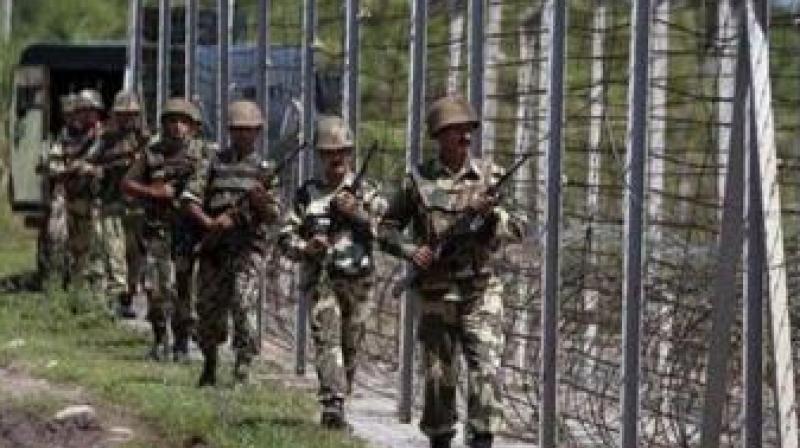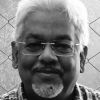Big J&K changes leave many wild cards in play

The asymmetric accession of Jammu and Kashmir to India has perhaps been the most haunting event in the psyche of the Hindutva forces in the post-Independence period. Their political icon Syama Prasad Mookerjee had died while under arrest in Srinagar fighting for “Ek Nishan, Ek Vidhan, Ek Pradhan (One flag, one constitution and one sovereign)”. Since then, the “exceptionalism” of J&K has continued to rankle with the inheritors of his political legacy. Finally, Mookerjee has been redeemed by the BJP, which can now claim to have righted a historic wrong.
Prime Minister Narendra Modi and his home minister Amit Shah believe they have completed the unfinished agenda of Partition. Already, Mr Shah is being hailed as the “New Sardar”, or Sardar Patel 2.0, and the friendly media is busy pushing the line that the final integration of J&K with the rest of India is the greatest moment in Indian history since August 15, 1947. This could well be the dominating theme of Prime Minister Narendra Modi’s Independence Day address next week.
The campaign to remove the special status of J&K seems to have been a ringing success with the Indian public. With this, the approval ratings of both Prime Minister Modi and his party are bound to skyrocket.
Meanwhile, a wedge has been driven between India’s small, cosmopolitan liberal elite and the rest of society. It has provided the latter with an exaggerated sense of national pride, something that had begun to erode in the face of a deepening economic crisis. State authority has once again triumphed with state control and repression getting strong public approval.
However, despite the widespread belief that the Kashmir business is finally over, there are still some wild cards at play.
The decision to remove the special status of J&K and bifurcate it into two Union territories has been taken by virtually barricading or arresting all the citizens of the Kashmir Valley. For virtually every lamp post in the Valley, a security person has been planted. This has allowed the Narendra Modi government to cast Kashmiri Society as a quiet, inert mass. But the Kashmir Valley cannot be kept under curfew or lockdown for ever. The Muslim festival of Id-ul-Zuha, otherwise known as Bakr-Id, falls on August 12. Can one imagine the emotionally wrought state of a population, kept away under the force of the gun, from offering prayers in their local mosque or Eidgah on one of the most important festivals in the Muslim religious calendar?
How such tightly coiled emotions will manifest once the curfew is lifted is anybody’s guess. Recouping the normality of everyday life will be extremely difficult for the Kashmiri population. The Kashmir Valley is like a pressure cooker, with no safety valve available today.
The most significant fallout of the Modi government’s action is that pro-India mainstream politicians have been delegitimised in the Valley. Those who carried the tricolour under trying circumstances for seven decades, holding out the prospect of conflict resolution through dialogue, have been thrown to the wolves. They have been lumped with the separatists. To survive, they may now be compelled to join the anti-India forces and take strident positions reflecting the public mood.
The emerging political vacuum in legislative politics may not be easy to fill. The BJP is buoyed by the fond hope that the panchayat, or village-level, representatives elected in December last year would be the new leaders of the Kashmiri people. How many of them would risk their lives to be targeted as puppets of Delhi remains to be seen.
It is almost certain, however, that militancy in Kashmir will get a new lease of life. Sporadic militancy may be transformed into a full-fledged armed insurgency. Picking up the gun would be justified as participation in peaceful, consultative, democratic processes would be blamed for the present denouement. The recruitment to militancy will increase, and so will its social acceptance. What might limit the spread of armed insurgency would be the availability of weapons. Pakistan has held back its hand and local militants have had to rely on guns snatched from security personnel.
In the rest of India, the prospect of Kashmir-related terrorism could also increase. As the security forces tighten their grip in the Valley, the Kashmiri militants may find it easier to strike elsewhere in India. While their capacity to do so may be limited, that would not be the case with Pakistan-backed terrorists.
In Pakistan, the Army and the government are already under increasing criticism for their inability to pressure India over Kashmir. The generals, seen as living off the fat of the land, stand to lose their legitimacy with the public as does Prime Minister Imran Khan for letting Pakistanis believe that US President Donald Trump would protect their interests in Kashmir. The India-oriented Islamic militant groups would get belligerent and seek establishment support. Pakistan may then be compelled to open the tap of terrorism once again.
India’s hope that international pressure would put a brake on such activities may prove to be shortlived in the face of an establishment fighting for survival.
Within India, the developments in Kashmir could send negative signals to the minority community about its political future. As it is, its voice in the public sphere has shrunk. Now that process may gain speed. Their fears about the implementation of the National Register of Citizens across the country may get further exacerbated.
Even as the nation becomes weak, the BJP will become electorally stronger. Within the BJP, home minister Amit Shah will be firmly established as the incarnation of Sardar Patel. He has after all achieved in his first 100 days what even Prime Minister Modi could not in five years. He will also emerge as the political heir apparent — and who knows in time perhaps even a challenger — to Prime Minister Modi.
For the moment the Modi-Shah duo can continue to blame the troubled history of J&K on their predecessor governments, the incompetent and corrupt politicians of that state and bleeding-heart liberals whom it anyway sees as fifth columnists. However, it remains to be seen how long this keeps their politics afloat amidst the economic and social unravelling taking place.

